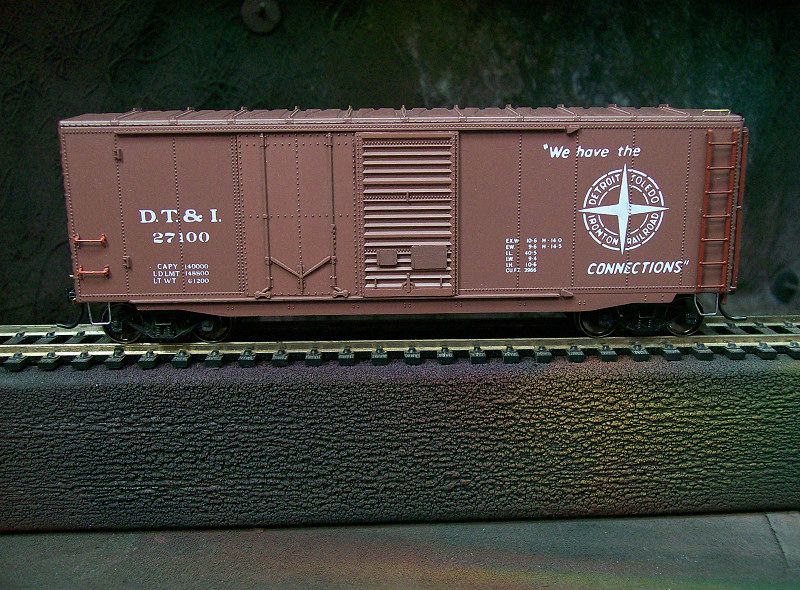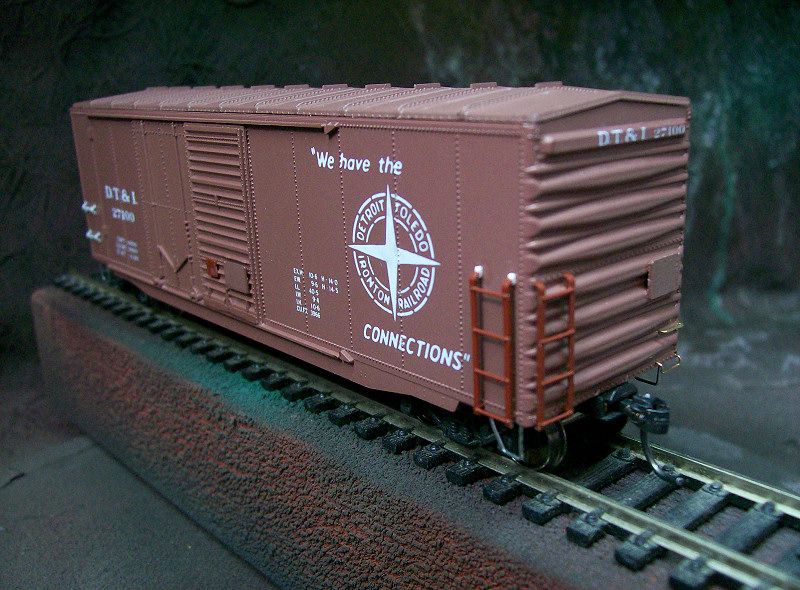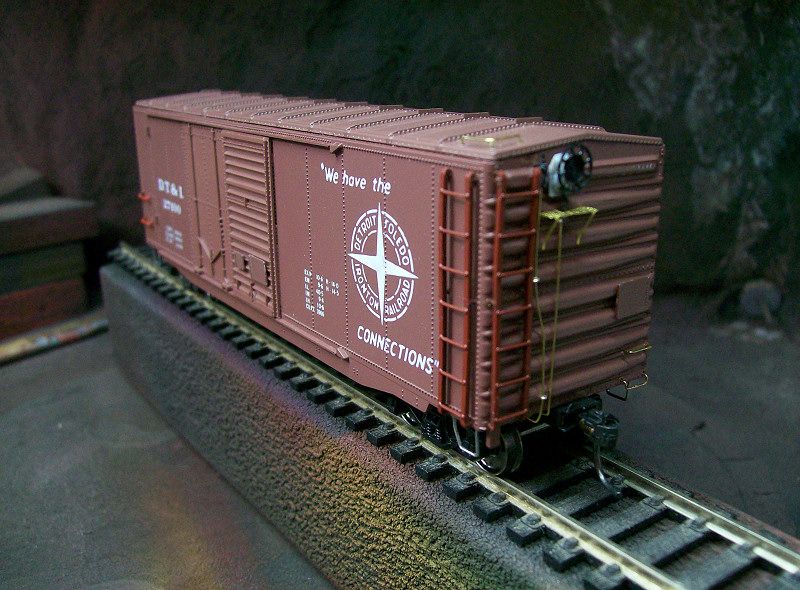Finishing a kit ...25 years later
The re-discovered kit was an old Front Range Products 40-foot double-door boxcar model, factory painted for the DT&I. It was purchased back when I was an undergrad (aka - a starving student) back in the late 1980’s, from ‘Rails West’ - what was the last true model train store in the K-W area. Already frustrated with the 60’s-era inaccuracies of the Athearn and Roundhouse boxcars of those times, I had begun collecting whatever Front Range, McKean, Details West, and Robins Rails kits I could afford. Over the years, many of these un-assembled kits were flea-marketed away as better models became available (and I came to realise I would probably never build them at this stage), but this DT&I car really brought back memories. This one had to be built.
Looking over the shell, the basic car body stood the test of time. The overall dimensions of the Front Range cars were bang-on, a big selling feature of their kits back in the 80’s. Yes the rivet-detail wasn’t as fine as current Intermountain, P2K, Atlas (ex-Branchline) or even Accurail offerings, but still decent. The paint and lettering was still crisp enough, besides the finished car would be weathered anyhow.
Most importantly for me, it had separately-applied detail parts, a major reason for my purchases of these kits years back. However, circa-2013, these parts now became the kit’s Achilles Heel – they were crude compared to current technology. To resuscitate this kit, I’d have to replace pretty much all FRP’s separate detail parts with better ones.
Apologies for not having the foresight to take any ‘before’ or ‘in-progress’ photos, I wasn’t thinking of writing a blog about this project. However the following images show what I had done prior to application of additional decals and weathering. All extra parts/details used were from my personal collection of modelling junque acquired over the years. The challenge was to update this kit without spending a penny more then I already had on kits/parts.
Before doing anything on the main body, the under-body needed to be squared away. Doing this afterwards risks damaging the more visible upper-body detail work.

First thing I did was to cut off and sand smooth FRP’s moulded-in coupler pockets, and installed Kadee #58 scale-couplers with their coupler boxes (standard #5’s or their scale centring spring-less #158’s are great too). Nothing (and I mean nothing!) works better than a Kadee coupler in its own box.
Next, after test fitting the kit-supplied underframe, I remembered that these Front Range cars rode high if assembled as is. So, after cutting apart the moulded-on airbrake rigging from the frame, I sanded down the base until I lost a millimetre or so from the overall height. I also sanded flat the ring-base on the tops of the bolsters. This drops the car about 2mm (almost two scale feet!) to get the coupler height to NMRA standards. The underframe is then glued in place, and trucks screwed-in using Bettendorf-style truck sideframes from Accurail, with Intermountain 33’’ metal wheelsets. This is a favourite combination of mine.
If you’re playing along at home… at this point, you should use a coupler gauge here to ensure couplers are at the proper height. If not, Kadee washers may be needed to raise the car height, or, possibly, styrene plastic added above the coupler boxes to lower their positions. Do whatever it takes to get this right before proceeding any further.
The brake-piping is done with 0.01’’ diameter brass wire, some scrap pieces of styrene plastic for the levers, and straightened/re-bent aluminium staples used for the hangers. This detailing is just visible when the car is viewed at eye-level, so (contrary to what you might think) I didn’t really go into too much work for this. If you want even less work for similar effect, Accurail sells their new Delran-plastic underbody brake-work at very reasonable prices.

The kit-supplied doors were still good-enough quality, so they were installed as FRP intended. The tack-boards on the main door are also FRP-supplied, but the backs were sanded down to reduce thickness, and installed in lowered (post-1960’s) positions. All other detail parts came from other sources.

Ladders and grabirons were Intermountain parts, from my collection of unused details that have been horded over the years (these can be purchased directly from Intermountain if needed). The A-end ladders have been shortened as per 1970’s practice, along with the absence of a roofwalk. B-end ladders retain their full-height, and an A-Line ‘L-shaped’ corner-grabiron installed at the roof corner above them.

The brake-wheel housing and airline valve on the B-end were from a Tichy Trains Group AB brake set. Brass wire (0.01” diam) was used for the brake- & air-lines, with O-rings used to hold/aid in installation. The brake wheel itself is from Kadee, who sell their superb PS-1 boxcar detail parts separately. The brake platform is a photo-etched brass Details Associate part. The brass wire 18” grabirons (upper straight and lower drop-grab) are Tichy Trains items.
The final items added to the body were the stirrups. These are, wait for it, aluminium staples that I straighten out, and re-bend into appropriate shapes. This is a modeller’s trick I discovered as a starving student, and have retained over the years. The stirrups never oxidize and are quite durable against fat-fingered train crews. For convenience, A-Line produces brass stirrups that are just as durable, for those who don’t wish to play with staples.